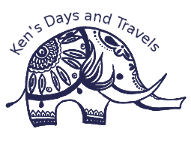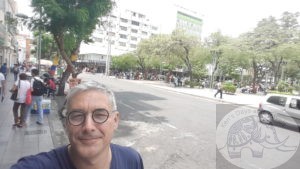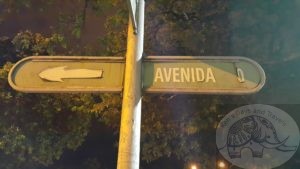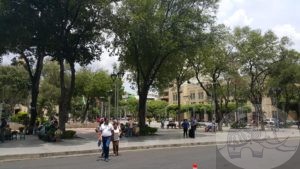Revisiting an Ancient Civilization’s ‘Explicit Zero’
Recently I was reading a short article about the Maya civilization of Central America, and the development of what may well be the first known use of an explicit zero in the world. (Trust me, talk to any mathematician and they will be able to talk for hours on why this is important). But that article actually brought back memories of the late afternoon and early evening sightseeing tour of Cucuta with my host. You see, there is an Avenida 0 or Zero Avenue in Cucuta, that more or less separates the East and West of the city, and which is also closed for several hours on specific days in the early evening to traffic, similar to the road closure in Bogota on Sundays.
More to offer than just its somewhat sordid past
Cucuta is written up as many different things, and due to its proximity to the Venezuelan border, is often more widely known for its smuggling history than for anything else. Certainly, the city is busy and has a lot of border traffic, but it has a lot more to offer visitors, unfortunately, my plans hadn’t progressed far enough that I had any particular place in mind. My aim was to stay in the city for one day, then cross the border into Venezuela. Best laid plans and all that…
I arrived on the evening of the 30th of August, hoping to spend 1 day in Cucuta, then cross over into Venezuela on the 1st of September. Unfortunately, the political situation in the country intervened in the form of a planned mass protest in Caracas for the 1st of September. I debated with my host and friends on the other side of the border, and the argument against me traveling further had some merit: what if they close the border? Then I wouldn’t be able to get in, so I would pretty much have to travel immediately, on the 31st. Then the counter argument was raised: what if they close the border and you can’t get out. That stopped me cold in my tracks. Much as I wanted to visit Venezuela, getting stuck inside the country was not part of the plan. We decided to hold off on crossing until after the planned protests on the 1st. In the meantime, I had been warned against taking anything of value into the country, I would certainly have everything taken away from me, with the likelihood that I would be supporting the families of national guard members with my valuables instead of myself.
Modern Banking is a Blessing
We found an interesting way around this dilemma: on the Colombian side I exchanged 150 dollars and transferred the resulting 150,000 Bolivars to my friend’s bank account in Venezuela – this was extremely convenient, as he would be traveling with me, and we’d simply use his debit card to pay for things along the way. I also exchanged another 35 dollars into 35,000 Bolivars to carry with me. People shook their heads, why would I want to take so much money with me, and why exchange so much and transfer it? After all, things in Venezuela were cheap. (I had thought about exchanging up to 300 dollars, but we agreed that my host would exchange the remaining 150 dollars and transfer it in a second batch if necessary. Now you have to understand that 35,000 Bolivars doesn’t sound like a lot, after all, in most countries with hyperinflation, bank notes come in denominations of multiples of thousand. Not so in Venezuela. The highest denomination is 100 Bolivars, and they only had a limited number of those on hand, so I was given my 35,000 Bolivars in 10s, 20s, and 50s, with only 2,000 Bolivars in 100s. I had nearly a cubic foot of paper that I had to carry with me in my day pack. So much for traveling inconspicuously.
Repacking for a Different Destination – the Beach
The wait ensued. The 31st was spent making plans, traveling through Cucuta and taking in some of the sights. The 1st of September rolled around, and everyone watched the developments in Venezuela – the protest in Caracas was huge, but the border remained open. I prepared for departure the next morning, repacking my bags, leaving behind all valuables and unnecessary items at my host’s home. I took a bare minimum of clothes as I was planning on going to the beach in Venezuela if I was not going to get to Angel Falls. The rest of the day was spent sightseeing, and meeting up with another wonderful couple of friends for dinner and drinks. They too were not too impressed with my idea of crossing the border, but if I had my mind set on it, well then, so be it.
On the Move into Zero Certainty
|
The morning of 2 September rolled around, and we set off early to the border post. My host had been so kind to offer to take me across, through the immigration formalities on both sides of the border, and get me on my way in Venezuela. Formalities on the Colombian side were easy and swift, a simple stamp in my passport, a warm smile and a wave, and I was on my way.
Much as Avenida 0 divides east and west in Cucuta, so the river Rio Tachira separates the order and sanity of Cucuta on the west bank and what I was soon to find out, the chaos and rapidly unraveling situation in what had, up to only a few years previously, been the richest country in South America. I had arrived in a country where disorder was order, a place where anything could happen, and did, a place where certainty of anything was exactly zero.




